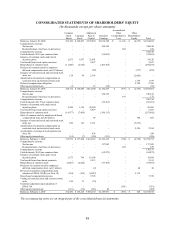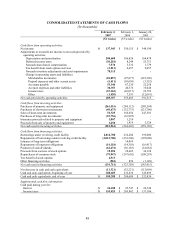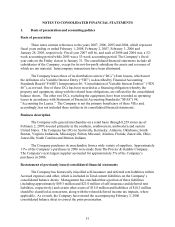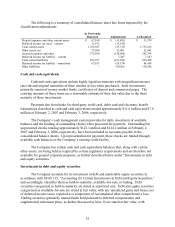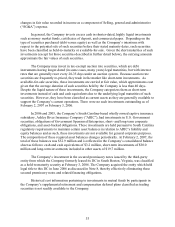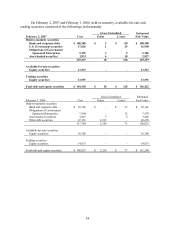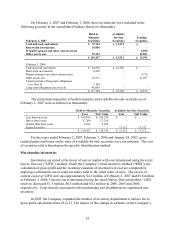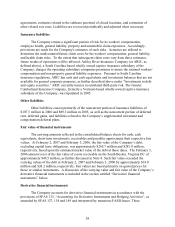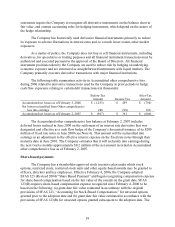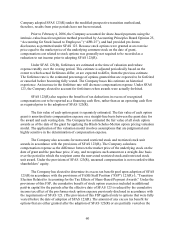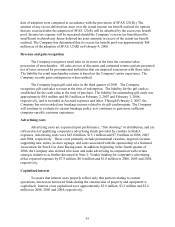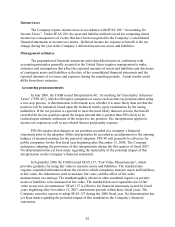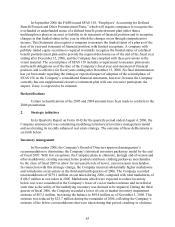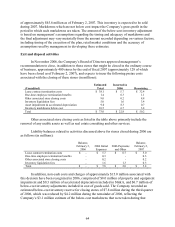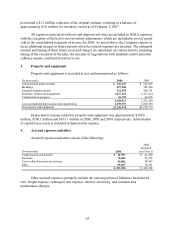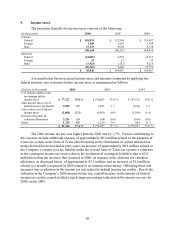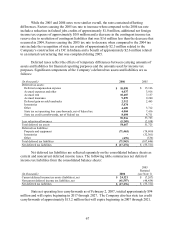Dollar General 2006 Annual Report Download - page 60
Download and view the complete annual report
Please find page 60 of the 2006 Dollar General annual report below. You can navigate through the pages in the report by either clicking on the pages listed below, or by using the keyword search tool below to find specific information within the annual report.agreements, estimates related to the sublease potential of closed locations, and estimation of
other related exit costs. Liabilities are reviewed periodically and adjusted when necessary.
Insurance liabilities
The Company retains a significant portion of risk for its workers' compensation,
employee health, general liability, property and automobile claim exposures. Accordingly,
provisions are made for the Company's estimates of such risks. Actuaries are utilized to
determine the undiscounted future claim costs for the workers' compensation, general liability,
and health claim risks. To the extent that subsequent claim costs vary from those estimates,
future results of operations will be affected. Ashley River Insurance Company (or ARIC, as
defined above), a South Carolina-based wholly owned captive insurance subsidiary of the
Company, charges the operating subsidiary companies premiums to insure the retained workers'
compensation and non-property general liability exposures. Pursuant to South Carolina
insurance regulations, ARIC has cash and cash equivalents and investment balances that are not
available for general corporate purposes, as further described above under “Investments in debt
and equity securities.” ARIC currently insures no unrelated third-party risk. The Greater
Cumberland Insurance Company, formerly a Vermont-based wholly owned captive insurance
subsidiary of the Company, was liquidated in 2005.
Other liabilities
Other liabilities consist primarily of the noncurrent portion of insurance liabilities of
$107.5 million in 2006 and $89.3 million in 2005, as well as the noncurrent portion of deferred
rent, deferred gains, and liabilities related to the Company’ s supplemental retirement and
compensation deferral plans.
Fair value of financial instruments
The carrying amounts reflected in the consolidated balance sheets for cash, cash
equivalents, short-term investments, receivables and payables approximate their respective fair
values. At February 2, 2007 and February 3, 2006, the fair value of the Company’ s debt,
excluding capital lease obligations, was approximately $265.7 million and $281.0 million,
respectively, based upon the estimated market value of the debt at those dates. The February 3,
2006 amount is net of the fair value of a note receivable on the South Boston, Virginia DC of
approximately $49.5 million, as further discussed in Note 8. Such fair value exceeded the
carrying values of the debt at February 2, 2007 and February 3, 2006 by approximately $14.0
million and $24.2 million, respectively. Fair values are based primarily on quoted prices for
those or similar instruments. A discussion of the carrying value and fair value of the Company’s
derivative financial instruments is included in the section entitled “Derivative financial
instruments” below.
Derivative financial instruments
The Company accounts for derivative financial instruments in accordance with the
provisions of SFAS 133, “Accounting for Derivative Instruments and Hedging Activities”, as
amended by SFAS 137, 138 and 149 and interpreted by numerous FASB Issues. These
58


